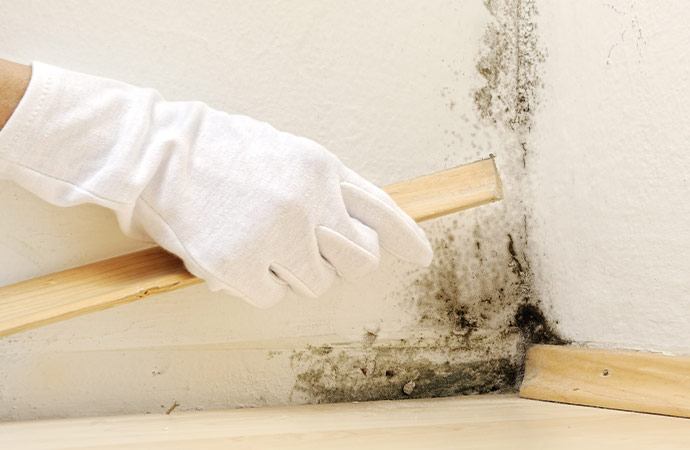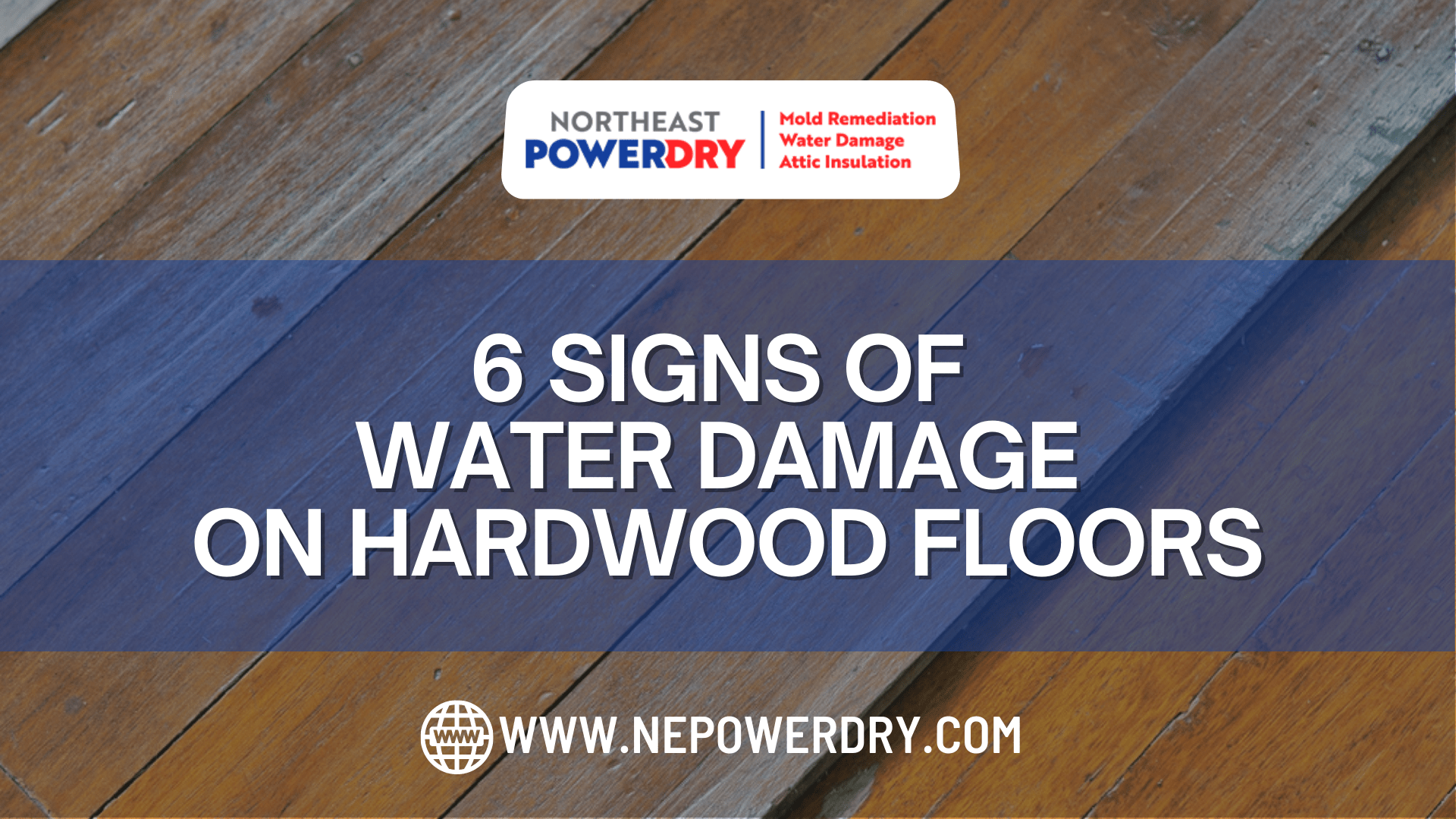Hardwood flooring can really bring out the best in a home and adds to its overall value. Unfortunately, your beautiful hardwood flooring can turn ugly after a water damage event like a pipe leak or flooding. Water can seep deep into porous material like wood, which means you must act quickly to dry and extract water before the damage is permanent.
If you’re not sure what water damage to hardwood flooring looks like, here are some examples.
Signs of Water Damage on Hardwood Floors
1. Staining or Discoloration
Are you noticing odd color patterns on your hardwood floors? Dark spots or faded colors between planks is a surefire sign that water damaged the planks. To prevent damage from spreading or worsening, you’ll need to clean and dry the area under the planks and replace the damaged ones.
2. Mold and Mildew Growth

Black or green spots on planks can also be a sign of mold and mildew growth. If water or excess moisture is left unchecked, it can foster the perfect environment for mold growth.
3. Plank Swelling
Wood is a porous material, meaning it will absorb moisture and water. As planks absorb moisture and water, they begin swelling and pushing on each other. This often results in planks rising. If more water or moisture is allowed near the risen planks, it could get underneath the floorboards and cause further damage.
4. Leaks in the Ceiling, Underneath Hardwood Floors
Is part of your basement situated under an area of the home with hardwood floors? While there may be no signs of water damage on the hardwood floors (yet), water stains on the ceiling in the basement tell a different story. There could be a water line leak that could eventually lead to water-damaged hardwood flooring and mold growth.
5. Soft Boards
Does it feel like your hardwood floors could break at any moment? Then they’ve likely experienced water damage and will need to be replaced. Water could have also reached the subflooring, so you should have it checked as well.
6. Cupping and Buckling Boards
Planks don’t always swell—some will warp, buckle, or cup when they are exposed to water for long enough. This creates an uneven surface and may allow additional water and moisture to reach the subflooring through the gaps it creates.
How Much Water Does it Take to Damage Hardwood Flooring?
It doesn’t take much water to cause damage to hardwood flooring. Flooding, leaks, and large spills can quickly turn your flooring into a mess. But what it really comes down to is how quickly you respond and the method used to mitigate damage.

Sure, you can handle most small spills on your own by quickly drying the area. You can even use a water vacuum to help extract excess moisture. However, some situations may not be so easily controlled. To avoid severe damage, you need the help of water damage professionals.
Get Water Damage Addressed by the Professionals
Flooding, pipe ruptures, and excessive humidity can damage several parts of your home, including the hardwood floors. Before the damage can set in, call Northeast Power Dry for water damage repair and restoration services. Our team is available 24/7 for emergency response throughout New Jersey. We also offer free moisture inspections. Call us at 848-244-8775 any time, any day of the week.
Comments are closed.


Recent Comments